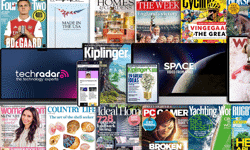Ask any comedian the secret of their performance and they are likely to say "timing". Most direct marketers would adamantly agree. Get the timing right - speak to your customer when they appreciate it most and you will see a higher response rate. However, with instant and pervasive marketing methods such as email and SMS - approach your customers at the wrong time and you could see increased opt-out rates and falling response.
When today’s consumer is bombarded with so many messages and offers, relevance and timeliness are key to a campaign’s success. Contacting your target audience at the right time is a different challenge for every medium and becomes an even greater test in a complex, integrated campaign. In the list of most important marketing elements in a campaign, timing is usually relegated to third, after offer and targeted list, but could timing be underused and underappreciated? In today’s much faster paced campaigns - probably.
It is important to remember that lists are perishable. Email, and even more so SMS data, goes out of date in three to six months. Telephone numbers and postal data last longer but even this depends on whether the contact address is business or consumer and the age and wealth of the contact. Use data which is "out of date" and you will waste money on low response rates and a high CPA.
What does effective use of timing actually mean? It’s not just a question of season, day of the week or even time of day. In a complex campaign, you must also consider at what point to send each element of a campaign, how they work together and what, logistically, you will need to make everything happen.
With so many variables in play, and every audience for every magazine unique - testing is the key to getting your timing right. I have put together my experience and opinions below, but the most important thing is to put together a clear testing plan for each of your campaigns and media and work your way through it.
Direct Mail
Direct marketers have known for some time now that there are significant seasonal differences in response rates for traditional direct mail. While a relevant summer or Christmas gifting campaign can uplift response in those months; on the whole, these are considered the "dead" periods for direct mail. That’s not to say that you shouldn’t test these times, but look at response rates before roll out.
It’s also important to consider on what day a mail pack will land on the doorstep. It could be worth testing a weekend vs mid week delivery to see whether this uplifts response, especially when mailing to consumers who may not read their post until the weekend.
Telemarketing
Getting the most out of your outbound telemarketing campaigns rests on reaching customers when they are most receptive and, ultimately, when they are at home! The best time to call depends very much on the kind of data you are calling. Most consumers will be able to take calls after working hours and will be more responsive at this time, but the business focused audience may be better approached in the working day. Mobile phone numbers add a further complication to the mix. The only way to really get to know your data and find the most profitable time to call is by testing. Make sure that your telemarketing company tests calling individual lists at different times of the day and put aside some testing budget for trialing weekend calls as well.
Don’t forget to also test the timing of telemarketing as part of a wider campaign. Contacting the list quickly after a show or event can make a big difference to your response rate. For example, Horse & Hound magazine moved from calling show data one month after a show to one week and saw a 46% uplift in response.
Email
More and more, email marketing is the preferred method of reaching the magazine reader. Both fast and potentially very cost effective, subscription marketers have been sending out a growing number of messages. In 2006, IPC Media sent subscription marketing emails to over 400,000 customers. Testing to find the best time of day and day of the week is very important in order to improve the open rate and response rate of a campaign. The results of tests have shown that what works for one market does not necessarily work for another, but there are some general learnings which are useful across the board.
I have found that consumers tend to check their personal email at the end of the working day or when they return home and have less time to check in the morning before work. Pinpointing the best day of the week to send email is also difficult. Here at IPC, we have so far found that Tuesday – Thursday have the best open rates, however a report published at MarketingVOX states that the optimal day of the week is now tough to choose, since the open rates seem to have evened out. The main lesson is that testing is key and the more you know and understand your audience, the better placed you will be to understand their habits and preferences - some online research may pay dividends to the success rate of your email campaigns.
Email is often used at IPC as part of an integrated campaign and we have tested its use both as a teaser and a reminder positioned around shows, telemarketing and direct mail. VW Camper magazine tested an email before a telemarketing campaign which uplifted response by 55% and the marine titles sent a portfolio reminder email after a show which added additional new orders.
If you can, follow up your initial email with another - often a recipient will click on the first mailing having received the second. However, you can’t wait too long to send the follow up otherwise they will have forgotten about the original offer - I recommend no longer than two weeks after the initial offer was sent. We have found great success by repeat emailing an offer to a customer before the close date of a campaign. In Style, for example, sent an email to a list which got a 20% open rate and then found that a follow up reminder email to the same list received a further 15% open rate.
In an integrated campaign, the timing really does have to be just right. IPC has seen significant differences in response rates depending on how quickly the second part of a campaign (telemarketing or direct mail) followed a teaser email. If you are telling a customer that their special offer is coming soon, I would recommend you don’t leave it longer than a week to follow up or they will probably have forgotten you!
SMS
Timeliness and relevance for SMS marketing is even more important. Not only is data out of date very quickly – which makes speedy use of data necessary to a successful marketing campaign – but according to research carried out for Cable and Wireless (survey by Teleconomy of 2000 consumers, 2004), time and place are critical to the consumer’s reception of a marketing message. Marketing text massages are twice as likely to cause complaint as cold calls if received outside working hours - worth bearing in mind when sending out outbound campaigns.
Advertising - web and print
In terms of in-title advertising, the best way that a subscription marketer can use timing to improve response rates is by making sure that an offer is relevant and where possible seasonal. Some successes we have had at IPC include portfolio Mother’s Day, Summer and Christmas gifting campaigns carried in-title and supported by carrier sheet advertising and web / email campaigns.
Advertising on the web can be even more targeted with specific messages before and after an event or significant date, timed to the hour and benefiting from much shorter lead times than in-title advertising. Marie Claire tested a "January sale" offer in 2007 which saw an uplift in response of 60% on the average result.
How many times to contact the customer?
At IPC Media, working on over 75 magazines across a range of subjects and with the benefit of a large pool of opted in address, telephone and email data - it is possible to finely target campaigns and successfully cross sell magazines. It would also be possible to deluge prospective customers with offers, but we follow best practice guidelines to prevent irritating customers and minimize opt-outs. We limit the amount of offers that can be targeted within a three month period to the same contact and regularly check data for opt-in / out preferences.
How often and how many times to make contact with a prospective customer is a difficult question which can only be answered by testing different lists and media. Our standard renewal series has been growing over the last two years with additional, profitable letters added before and after the main series, to increase response and the renewal rate. The early bird letter has seen a 3% increase in renewal rates on the magazines tested. This is an example of how the customer often needs several contacts to build the relationship to the point where they are ready to take up your offer. People often have not seen or taken notice of an offer first time around, and as discussed above, a reminder can be very effective.
As I have shown in this article, there are several guidelines and tips which are useful when planning your subscription marketing campaign in all media. However, the only real way to find the best use of marketing for your magazine is to test every facet of a campaign. Without carefully measuring the results of different variations on timing and frequency, there is no way to know what works best for you to achieve the best response rate. Timing is key but testing is crucial.
FEATURE
The right moment
In subs marketing, as in life, getting what you want often depends on when you ask for it. Ask too soon, too late or at an inappropriate time and you’ll get nothing. But, get your timing right, says Sophia Dempsey, and things will start to look up.










